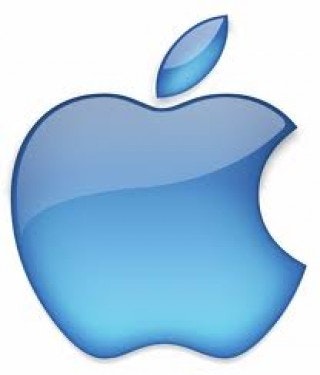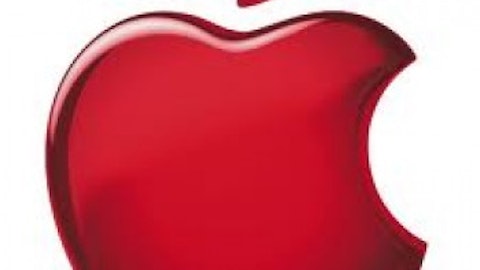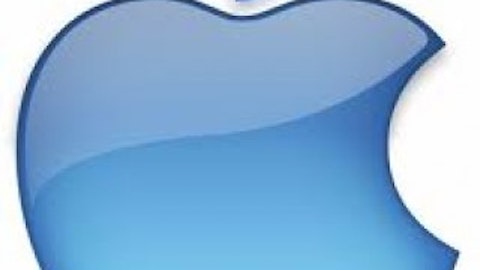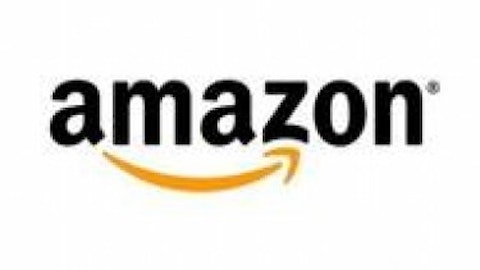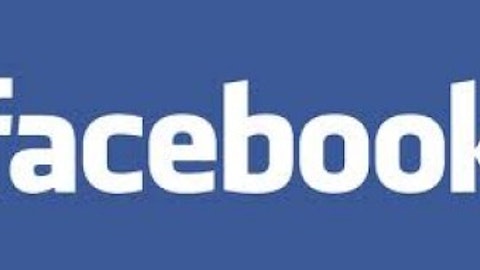Apple Inc. (NASDAQ:AAPL) has conjured much debate of late. The recent crash, a culmination of a larger, slower, trek from the 700 peak, has had many self-proclaimed analysts in a bit of a frenzy. They derided Apple Inc. (NASDAQ:AAPL) as a finished growth-stock, noting declining profits, rising margins, growing competition, the loss of Saint Jobs, and the inevitable end of Apple as we know it. Shares were to be $200 a piece—the gravy train had spilt and was about to tip over all together.
And then there were those other viewpoints. These were much less epic, certainly much less so than the demise, fall, and decay of a much beloved tech giant, flashing lights, sound-effects and all. This was the value camp and it called Apple Inc. (NASDAQ:AAPL) undervalued—no, cheap—dirt cheap.
The P/E
The following are some financials for Apple Inc. (NASDAQ:AAPL), and two very large, very established tech companies. (These numbers of obtained from Google.com/finance on 2/11/13 after hours).
| Apple (NASDAQ:AAPL) | IBM( NYSE:IBM) | Microsoft (NASDAQ:MSFT) | |
| Price (2/11/2013) | $479.93 | $200.16 | $27.65 |
| Market Cap | 450.68B | 226.17B | 233.63B |
| EPS | $44.10 | $14.41 | $1.82 |
| P/E: | 10.88 | 13.89 | 15.28 |
I know value investors especially rely on the P/E as a value indicator, and perhaps I’m overstating the obvious, but how is it that Apple Inc. (NASDAQ:AAPL)’s earnings-per-share are twice that of IBM and Microsoft combined, yet its P/E ratio is below either? I’m not expecting a high P/E, for instance, Google’s 24.10, but 10.88? How about 13, still below both IBM and MSFT? That would put Apple share price at $573.30—that’s over 18% above the current price.
I’ll take a step back and say that comparing Apple to IBM or Microsoft may seem a bit like comparing apples to—well—IT companies. It’s true. Apple is no IBM and it’s certainly no Microsoft. Over the past decade, Apple has had the force and forte to spread itself across the board into just about every tech market. When it ran out of board space, it just went and created a whole new board—or pad. No, Apple is no IBM, and it’s certainly no Microsoft. Yet despite its massive size, cash reserves, market share, a history of innovation, a recently introduced dividend, and the overall major brand it has built, the market believes that both IBM or Microsoft are better potential investments. Clearly investors are hesitant to see Apple as a growth stock, but a P/E of 10.88?—really?
Maybe this reflects investor sentiment that Apple’s earnings are bound for a fall instead of steady growth, or at the very least, a lack of steady growth. Perhaps investors fear encroaching competition from Android, other smart-phones, other tablets, or other services. That’s a fair scenario—after all, it’s happened to Apple before when they were out-competed by Microsoft in the previous century. Is it really a wonder investors are skittish?
But suppose for a moment Apple is undervalued. Suppose that it will continue to produce top-of-the-line electronics, stylish and sleek, and dare I say, innovative? What then is a fair-value P/E? 13? 14? 15–on par with Microsoft? More? At a P/E of 15, maintaining current EPS, Apple would be priced at $661.50 per-share—that’s over a 37% climb from its current price. Wishful thinking? That’s up for debate.
The article A Brief Value Case For Apple: The P/E originally appeared on Fool.com and is written by Olek Kovalyov.
Copyright © 1995 – 2013 The Motley Fool, LLC. All rights reserved. The Motley Fool has a disclosure policy.
